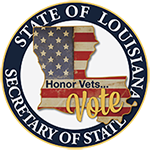 The Attakapas Indians called it Atchafalaya or "long river". Stretching over 135 miles, the Atchafalaya river has been the life line affecting the history and tradition of Morgan City. From its first Attakapas residents to the present day shrimping and oil trade, the river has provided prosperity and opportunity coupled with difficult challenges to many generations. As the tide ebbs and flows along the river, so does Morgan City. The city is a "gumbo" of French, Spanish, Italian, German, Dutch, Native and African American heritages blended into a strong belief in faith, tradition and family that define the strength of the city today.
The Attakapas Indians called it Atchafalaya or "long river". Stretching over 135 miles, the Atchafalaya river has been the life line affecting the history and tradition of Morgan City. From its first Attakapas residents to the present day shrimping and oil trade, the river has provided prosperity and opportunity coupled with difficult challenges to many generations. As the tide ebbs and flows along the river, so does Morgan City. The city is a "gumbo" of French, Spanish, Italian, German, Dutch, Native and African American heritages blended into a strong belief in faith, tradition and family that define the strength of the city today.
Originally known as Tigre Island because of the spotting of an unknown cat there by a group of U.S. surveyors, the area attracted the attention of Kentucky planter and surgeon Walter Brashear. Brashear's subsequent subdividing of his sugar cane plantation was the beginning of the first permanent settlement known as the town of Brashear.
Because of Morgan City's strategic marine location, the town of Brashear played a prominent role in the war between the states. Brashear was occupied by Federal troops for over three years. It was in Morgan City that the Union troops planned the destruction of the Avery Island salt mines, the cutting off of Rebel supply lines from Texas, the capture of Texas to restore her to the Union, and the annihilation of all Confederate resistance in southwest Louisiana. The remains of Fort Starr, a Union fort, are still visible.
Following the war, Charles Morgan, a steamship and railroad entrepreneur, successfully dredged the Atchafalaya Bay Channel and made Brashear his base of operations. As a result, Brashear became a bustling trade center for animal fur, cypress timber, and seafood. In 1876, the town was renamed Morgan City in his honor.
 The late 1800s and early 1900s was an era of growth and development. Many of the historic buildings such as Sacred Heart Catholic Church, Trinity Episcopal Church, and Pharr Chapel Methodist as well as distinctive homes including Cotton Top, the Norman-Schreier House, and the Turn-of-the-Century House were constructed. Boat building, moss picking, and a shell crushing plant broadened Morgan City's economic base.
The late 1800s and early 1900s was an era of growth and development. Many of the historic buildings such as Sacred Heart Catholic Church, Trinity Episcopal Church, and Pharr Chapel Methodist as well as distinctive homes including Cotton Top, the Norman-Schreier House, and the Turn-of-the-Century House were constructed. Boat building, moss picking, and a shell crushing plant broadened Morgan City's economic base.
Substituting the jungles of Africa with the swamps of Morgan City, Hollywood made its mark in 1917 with the filming of the first Tarzan movie starring Elmo Lincoln. This would be the first of several films highlighting Morgan City's diverse landscape.
In 1937, Morgan City became known as the "jumbo" shrimp capitol of the world. A community strongly rooted in Catholicism and tradition, a "blessing of the fleet" was held to insure a safe return and a bountiful harvest. Following the blessing, the celebration traveled to Egle's Place for a fais-do-do, a Cajun dance. This was the inception of the Louisiana Shrimp Festival, the state's oldest chartered harvest festival.
A decade later, Morgan City made national headlines when Kerr-McGee Industries drilled the first successful offshore oil well out of sight of land. According to The Times Picayune, it was the most significant discovery to date. The "black gold rush" marked a new era in the city's prosperity. Because of its considerable importance to the economy, "petroleum" was added to the Louisiana Shrimp Festival. The present day Louisiana Shrimp & Petroleum Festival is held every Labor Day weekend in the historic district.
Morgan City's Main Street Program designation was officially recognized in 1997, and combined with the nine-block historic district, it now encompasses a 19- block area.
Just as the Atchafalaya River continually flows, so does Morgan City. Its ebbs have defined its character and have made us a stronger people. A relentless spirit of the people and a strong belief in family, faith, and tradition make Morgan City the place we call home.

Quick Facts
Population: 11,472Median Age: 43.3
Median Income: $48,857





 Morgan City History
Morgan City History